The first-quarter earnings reports for S&P 500 companies are pretty much in the books as I write this. The results, for the most part, were overwhelmingly positive, which leaves investors with the difficult task of picking stocks to buy.
Fact A: According to Factset Research Systems Inc. (NYSE:FDS), with 91% of the S&P 500 companies reporting earnings in Q1 2018, 78% delivered a positive earnings surprise while 77% reported a positive revenue surprise. If this holds up, Q1 2018 will be the most surprising quarter of earnings results since Factset started keeping track in 2008.
Fact B: The blended earnings growth rate (actual plus estimates) for S&P 500 companies in the first quarter is 24.9%, the highest rate since Q3 2010. Add to this the fact ten sectors have a higher earnings growth rate today than at the end of March thanks to Fact A, and you have the makings of an earnings tsunami.
To save you the work of digging through all of the data, I’m going to do it for you. By the end, you’ll have seven surprising stocks to buy from seven different sectors. But before you run out and buy the stocks on my list, remember that some experts are suggesting we’re currently experiencing peak earnings; the future’s not going to be nearly as rosy.
A crystal ball, I don’t have.
Compare Brokers
Surprising Stocks to Buy Now: Amazon.com (AMZN)
Hey, I’m as big a fan of Jeff Bezos and Amazon.com Inc. (NASDAQ:AMZN) as anyone, but how on earth did the world’s biggest e-commerce company beat analyst estimates by 157%?
I’ll admit I love using analysts for sound bites in my coverage of public companies but there’s something definitely wrong when a business on as big a roll as AMZN gets a Q1 2018 estimate of $1.27, 21 cents lower (!?!) than the year before.
Are these men and women not reading Amazon’s financial reports?
If you are an Amazon shareholder, the one thought you should have after examining its first-quarter results is: Please keep losing money internationally — the unit had a $622 million operating loss in the quarter, 29% higher than a year earlier — because we know what happened with its North American e-commerce business after losing lots of money; it’s now making lots of money.
Throw in its AWS business which grew operating margins by 140 basis points year-over-year while pulling down $1.4 billion in operating profits and I’m not sure there’s an argument against owning its stock for the next 10-30 years.
Compare Brokers
Surprising Stocks to Buy Now: Occidental Petroleum (OXY)
How do you know that oil prices are rising? Oil and gas producers are handily beating earnings estimates and share prices are hitting 52-week highs. Occidental Petroleum Corporation (NYSE:OXY) reported earnings per share May 9 of 92 cents, 30% higher than analyst estimates. On the top line, Occidental had revenue of $3.83 billion, 3.5% higher than analyst expectations and 29% higher than a year earlier.
That’s what happens when a barrel of oil goes from $40 to over $70 in less than a year. Even better, if you’re an OXY shareholder, the company upped its production guidance for 2018 to as high as 665 million barrels of oil equivalent per day (Mboe/d).
Making money at less than $70 a barrel — much less if oil prices move even higher, which many expect to happen this summer — Occidental will be rolling in the dough.
“Once we achieve our remaining milestones we will be well-positioned in the future with the cash flow necessary for our $40 oil price business sustainability and $50 oil price business growth scenarios,” CFO Cedric Burgher said. “But we will continue to operate our business to reduce those breakevens even further.”
Bring on $80 oil.
Compare Brokers
Surprising Stocks to Buy Now: Tripadvisor (TRIP)
If you bought $1,000 of Tripadvisor Inc (NASDAQ:TRIP) stock a year ago, today you’d have a $68 gain for your troubles. However, if you bought $1,000 of TRIP stock in November, you would have a $610 gain, or almost 10 times the paper profit. Needless to say, the past 12 months have been a bit of rollercoaster ride for TRIP … but if its latest earnings are any indication, the next 12 months might be a little smoother.
The travel site — it actually has a bunch of different sites in addition to TripAdvisor — was expected to earn 16 cents a share in the first quarter but reported $0.30, 88% higher than the estimate.
“In February we outlined our expectation of approximately flat consolidated adjusted Ebitda in 2018 compared to 2017,” stated its Q1 2018 press release. “Our solid start to the year makes us more positive, and we now expect to deliver year-over-year consolidated adjusted EBITDA growth in 2018.”
That right there is the big driver of TRIP stock since February. While its hotel segment is continuing to see lower revenue, its non-hotel business, which includes restaurant reviews and vacation rentals, is experiencing significant growth.
I’d continue to follow the non-hotel segment’s progress. That’s what will drive TRIP stock in the future.
Compare Brokers
Surprising Stocks to Buy Now: Newell Brands (NWL)
As we’ve seen from Q1 2018 earnings reports, companies that beat estimates are given very little love and those that barely miss are pummeled. That’s exactly what’s happened to Newell Brands Inc (NYSE:NWL) when it reported earnings May 4. Analysts were expecting earnings per share of 26 cents; Newell came in at 34 cents, 31% higher than the estimate. Yet NWL barely moved.
The likely culprit? Analysts were expecting revenue of $3.039 billion, Newell was short by $22 million. Factor in the company is in the middle of rightsizing its business in terms of the number of brands it owns and investors see a lukewarm growth story.
However, Newell’s accelerated transformation plan is far from finished. In its Q1 2018 press release, it announced that it would also potentially sell its Jostens and Pure Fishing businesses if the right offers came along.
“The divestiture process is well underway and the company expects to complete all transactions by the end of 2019,” stated Newell’s Q1 2018 press release. “In 2020, the Company expects net sales of approximately $9.5 billion and normalized operating margin greater than 15 percent.”
Trading at a P/S and P/B that’s lower than it’s been in recent years, I’d consider a small position with an eye to adding to it once it’s clear the fine-tuning of its portfolio is working.
Compare Brokers
Surprising Stocks to Buy Now: Cigna (CI)
Health insurer Cigna Corporation (NYSE:CI) beat Q1 2018 earnings by 21% — its EPS excluding one-time items was $4.11 compared to the $3.39 consensus — prompting the company to up its EPS outlook for 2018 to $13.05 a share at the midpoint from its previous guidance of $12.65.
On the horizon, Cigna’s working on acquiring pharmacy benefits manager Express Scripts Holding Co (NASDAQ:ESRX) for $52 billion; investors are concerned the deal won’t get approval from anti-trust regulators.
Cigna CEO David Cordani believes the acquisition will help it cut medical costs for its customers. In 2017, medical costs rose by 3%. It expects those costs could rise by as much as 5% in 2018. It would like to get medical cost increases down to CPI inflation.
In the first quarter, membership in its health care plans increased by 3%. It now has 16.2 million members. With revenues rising almost double digits with healthy increases in earnings, with or without Express Scripts, I see Cigna doing just fine.
Buy on current weakness.
Compare Brokers
Surprising Stocks to Buy Now: Boeing (BA)
I was one of many in the business media writing about Boeing Co’s (NYSE:BA) stellar first-quarter earnings April 25. Boeing delivered adjusted earnings per share of $3.64, 41% higher than the consensus estimate. While we’re on the subject of beats, its free cash flow was $2.74 billion, 84% higher than analyst expectations.
“Well it’s not every day that a mega-cap company beats consensus by 40 percent,” Robert Stallard, an analyst with Vertical Research Partners said in a note to clients. “The wall of cash that the company is generating makes it hard to be absent from the stock.”
Indeed.
Based on an enterprise value of $196.4 billion and a trailing 12-month free cash flow of $12.6 billion, Boeing has an FCF yield of 6.4%, a perfectly decent yield for a company that’s firing on all cylinders at the moment. Here’s what I had to say about Boeing in April a couple of weeks before earnings:
“Now that I’m back on Boeing wagon, I do believe that Boeing stock could deliver 20%-25% compound annual growth over the next five years,” I wrote April 10. “If it does, a $1,000 stock price is not out of the realm of possibility.”
After its strong first quarter, I have no doubt it’s possible by 2023.
Compare Brokers
Surprising Stocks to Buy Now: Zions Bancorp (ZION)
Zions Bancorp (NASDAQ:ZION), the Salt Lake City-based regional bank with operations in 11 states and $66 billion in assets, announced first-quarter results April 24 that saw it beat on both the top and bottom line. In terms of earnings, analysts were expecting 83 cents a share; Zion delivered $1.09, 31% higher than the consensus. On the top-line, Zion’s Q1 2018 revenue was $684 million, 9.6% higher than a year earlier and $18 million above what analysts were expecting.
Heading into the second quarter, Zion, like most U.S. companies, is paying less tax. Typically, the bank has an effective tax rate in the mid-to-low 30% range; in 2018 it should be around 23%, adding a bit more oomph to future earnings reports. Zions, which services the western portion of the U.S., is benefiting from a strong economy. It expects this to continue for the remainder of the year.
A quick look at most of its major metrics in Q1 2018 compared to a year earlier paints a very pretty picture. Its return on average assets in the first quarter was 1.45%, 57 basis points higher than a year earlier and almost double what it was in the fourth quarter. In terms of its tangible return on average tangible common equity, it was 15.5%, well above the 8.8% return it generated in Q1 2017.
Virtually everywhere I look I see a business that’s prospering. As a shareholder, that’s all you can ask for.
As of this writing, Will Ashworth did not hold a position in any of the aforementioned



 Cheapcoin (CURRENCY:CHEAP) traded flat against the US dollar during the 1 day period ending at 0:00 AM Eastern on July 11th. Cheapcoin has a market cap of $0.00 and $0.00 worth of Cheapcoin was traded on exchanges in the last 24 hours. One Cheapcoin coin can currently be bought for $0.0003 or 0.00000004 BTC on major cryptocurrency exchanges. In the last week, Cheapcoin has traded flat against the US dollar.
Cheapcoin (CURRENCY:CHEAP) traded flat against the US dollar during the 1 day period ending at 0:00 AM Eastern on July 11th. Cheapcoin has a market cap of $0.00 and $0.00 worth of Cheapcoin was traded on exchanges in the last 24 hours. One Cheapcoin coin can currently be bought for $0.0003 or 0.00000004 BTC on major cryptocurrency exchanges. In the last week, Cheapcoin has traded flat against the US dollar. 
 YHB Investment Advisors Inc. acquired a new position in shares of Liberty Latin America Ltd Class C (NASDAQ:LILAK) in the 2nd quarter, Holdings Channel reports. The fund acquired 15,368 shares of the company’s stock, valued at approximately $298,000.
YHB Investment Advisors Inc. acquired a new position in shares of Liberty Latin America Ltd Class C (NASDAQ:LILAK) in the 2nd quarter, Holdings Channel reports. The fund acquired 15,368 shares of the company’s stock, valued at approximately $298,000. 
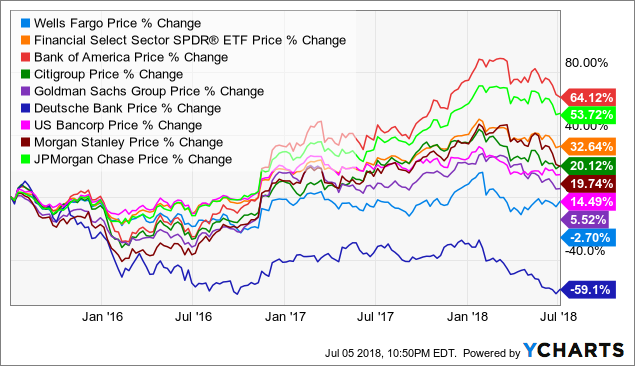 WFC data by YCharts
WFC data by YCharts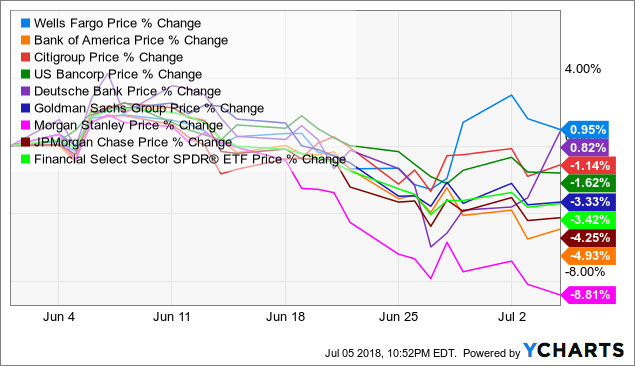 WFC data by YCharts
WFC data by YCharts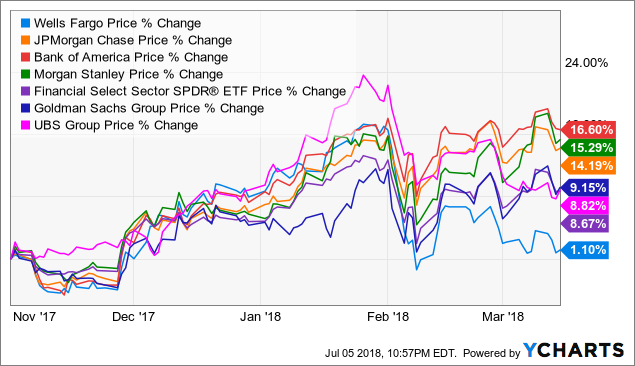 WFC data by YCharts
WFC data by YCharts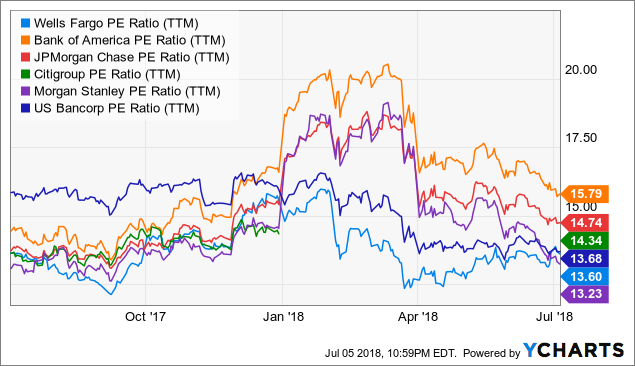 WFC PE Ratio (NYSE:TTM) data by YCharts
WFC PE Ratio (NYSE:TTM) data by YCharts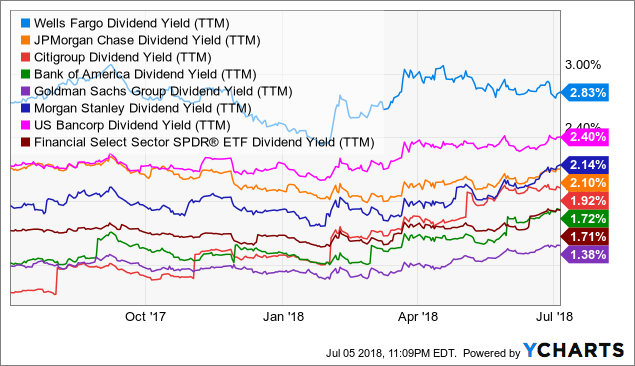 WFC Dividend Yield (TTM) data by YCharts
WFC Dividend Yield (TTM) data by YCharts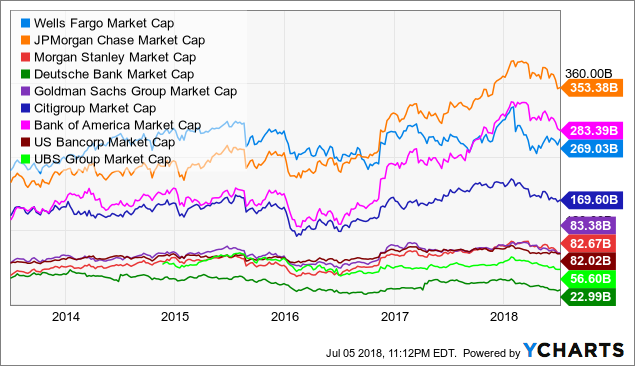 WFC Market Cap data by YCharts
WFC Market Cap data by YCharts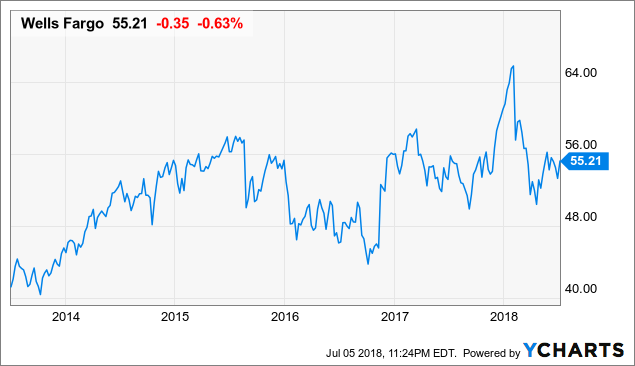 WFC data by YCharts
WFC data by YCharts CommScope Holding Company, Inc. provides infrastructure solutions for communications networks worldwide. The company's CommScope Connectivity Solutions segment offers optical fiber and twisted pair structured cable solutions, intelligent infrastructure software, and network rack and cabinet enclosures under the SYSTIMAX, NETCONNECT, and Uniprise brands; and fiber management systems, patch cords and panels, pre-terminated fiber connectivity, complete cabling systems, and cable assemblies for use in offices and data centers. This segment also provides fiber optic connectivity solutions, including hardened connector systems, fiber distribution hubs and management systems, couplers and splitters, plug and play multiport service terminals, hardened optical terminating enclosures, high density cable assemblies, splices, and splice closures that supports video, voice, and high-speed data services provided by telecommunications operators and multi-system operators. Its CommScope Mobility Solutions segment offers macro cell site solutions for wireless tower sites and on rooftops, such as base station antennas, microwave antennas, hybrid fiber-feeder and power cables, coaxial cables, connectors, and filters; metro cell solutions for street poles and other urban structures comprising radio frequency delivery and connectivity solutions, equipment housing, and concealment; and small cell and distributed antenna system (DAS) solutions consisting of DAS and distributed cell solutions that allow wireless operators to enhance efficiency, and cellular coverage and capacity in network conditions. This segment provides its solutions under the Andrew brand. CommScope Holding Company, Inc. sells its products through a network of distributors, system integrators, and resellers. The company was formerly known as Cedar I Holding Company, Inc. CommScope Holding Company, Inc. was founded in 1976 and is headquartered in Hickory, North Carolina.
CommScope Holding Company, Inc. provides infrastructure solutions for communications networks worldwide. The company's CommScope Connectivity Solutions segment offers optical fiber and twisted pair structured cable solutions, intelligent infrastructure software, and network rack and cabinet enclosures under the SYSTIMAX, NETCONNECT, and Uniprise brands; and fiber management systems, patch cords and panels, pre-terminated fiber connectivity, complete cabling systems, and cable assemblies for use in offices and data centers. This segment also provides fiber optic connectivity solutions, including hardened connector systems, fiber distribution hubs and management systems, couplers and splitters, plug and play multiport service terminals, hardened optical terminating enclosures, high density cable assemblies, splices, and splice closures that supports video, voice, and high-speed data services provided by telecommunications operators and multi-system operators. Its CommScope Mobility Solutions segment offers macro cell site solutions for wireless tower sites and on rooftops, such as base station antennas, microwave antennas, hybrid fiber-feeder and power cables, coaxial cables, connectors, and filters; metro cell solutions for street poles and other urban structures comprising radio frequency delivery and connectivity solutions, equipment housing, and concealment; and small cell and distributed antenna system (DAS) solutions consisting of DAS and distributed cell solutions that allow wireless operators to enhance efficiency, and cellular coverage and capacity in network conditions. This segment provides its solutions under the Andrew brand. CommScope Holding Company, Inc. sells its products through a network of distributors, system integrators, and resellers. The company was formerly known as Cedar I Holding Company, Inc. CommScope Holding Company, Inc. was founded in 1976 and is headquartered in Hickory, North Carolina.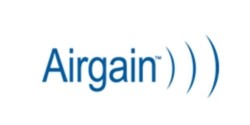 Airgain, Inc. designs, develops, and engineers antenna products for original equipment and design manufacturers, chipset vendors, and service providers worldwide. Its products include MaxBeam embedded antennas; profile embedded antennas; profile contour embedded antennas; ultra-embedded antennas; omnimax high performance external antennas; MaxBeam carrier class antennas; and SmartMax embedded antennas, as well as automotive, fleet, public safety, and M2M antennas. The company provides embedded antenna technologies to enable high performance wireless networking across a range of home, enterprise, automotive, and Internet of Things. As of December 31, 2017, it had 131 issued patents in the United States, 23 companion patents outside the United States, and 81 patent applications on file. The company was formerly known as AM Group and changed its name to Airgain, Inc. in 2004. Airgain, Inc. was founded in 1995 and is headquartered in San Diego, California.
Airgain, Inc. designs, develops, and engineers antenna products for original equipment and design manufacturers, chipset vendors, and service providers worldwide. Its products include MaxBeam embedded antennas; profile embedded antennas; profile contour embedded antennas; ultra-embedded antennas; omnimax high performance external antennas; MaxBeam carrier class antennas; and SmartMax embedded antennas, as well as automotive, fleet, public safety, and M2M antennas. The company provides embedded antenna technologies to enable high performance wireless networking across a range of home, enterprise, automotive, and Internet of Things. As of December 31, 2017, it had 131 issued patents in the United States, 23 companion patents outside the United States, and 81 patent applications on file. The company was formerly known as AM Group and changed its name to Airgain, Inc. in 2004. Airgain, Inc. was founded in 1995 and is headquartered in San Diego, California. Vishay Precision Group (NYSE:VPG) CFO William M. Clancy sold 10,000 shares of Vishay Precision Group stock in a transaction dated Wednesday, May 23rd. The stock was sold at an average price of $35.45, for a total value of $354,500.00. Following the sale, the chief financial officer now directly owns 29,575 shares in the company, valued at $1,048,433.75. The transaction was disclosed in a document filed with the Securities & Exchange Commission, which can be accessed through this link.
Vishay Precision Group (NYSE:VPG) CFO William M. Clancy sold 10,000 shares of Vishay Precision Group stock in a transaction dated Wednesday, May 23rd. The stock was sold at an average price of $35.45, for a total value of $354,500.00. Following the sale, the chief financial officer now directly owns 29,575 shares in the company, valued at $1,048,433.75. The transaction was disclosed in a document filed with the Securities & Exchange Commission, which can be accessed through this link.  Analysts say the future of the euro could take center stage if Italy holds new elections later this year.
Analysts say the future of the euro could take center stage if Italy holds new elections later this year. 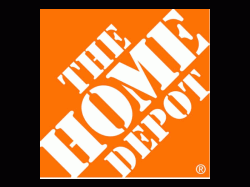 Israel Discount Bank of New York reduced its holdings in shares of The Home Depot (NYSE:HD) by 24.0% in the fourth quarter, according to the company in its most recent 13F filing with the Securities and Exchange Commission. The firm owned 3,833 shares of the home improvement retailer’s stock after selling 1,210 shares during the period. Israel Discount Bank of New York’s holdings in The Home Depot were worth $726,000 as of its most recent SEC filing.
Israel Discount Bank of New York reduced its holdings in shares of The Home Depot (NYSE:HD) by 24.0% in the fourth quarter, according to the company in its most recent 13F filing with the Securities and Exchange Commission. The firm owned 3,833 shares of the home improvement retailer’s stock after selling 1,210 shares during the period. Israel Discount Bank of New York’s holdings in The Home Depot were worth $726,000 as of its most recent SEC filing. 

